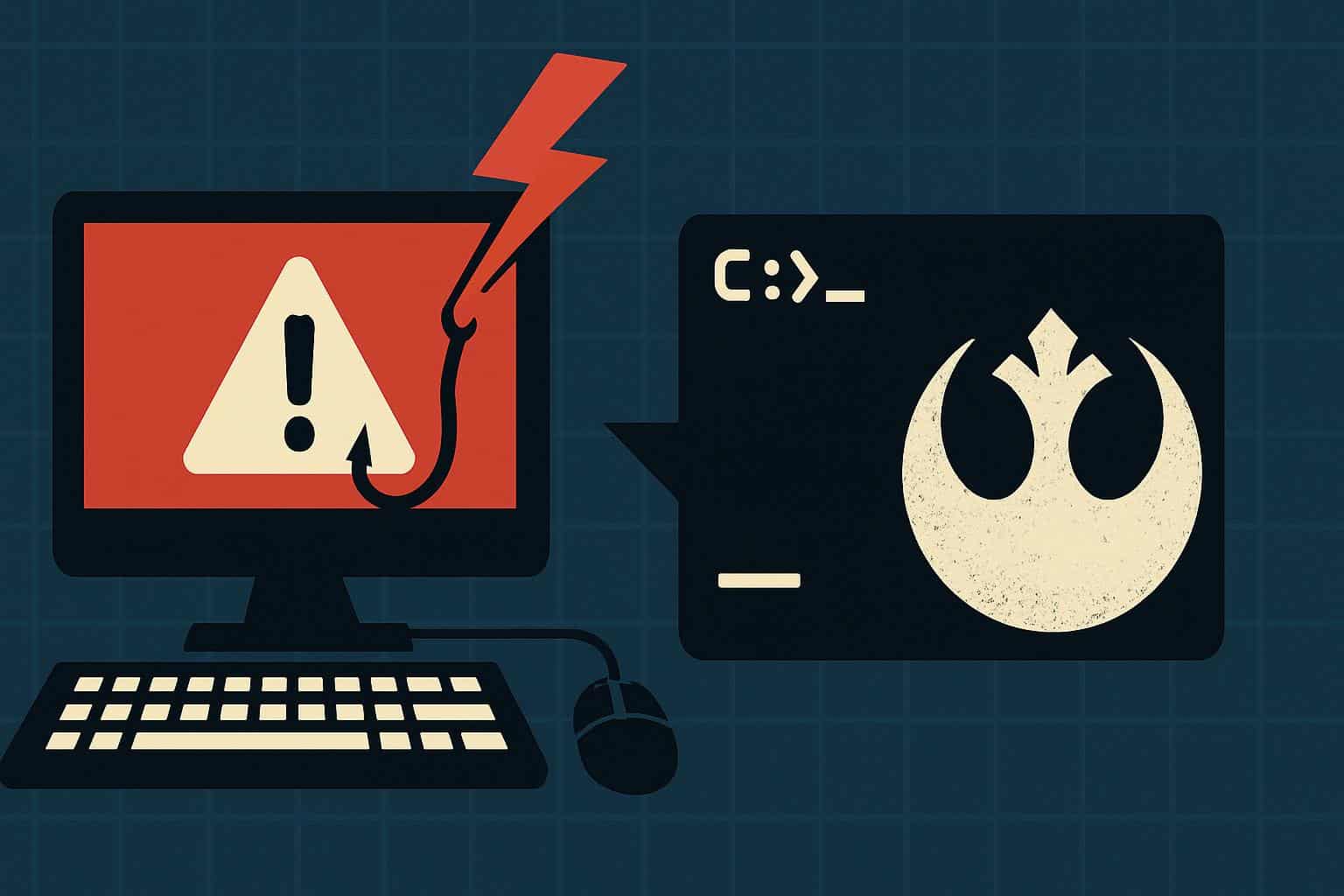Microsoft is warning of a rapidly growing technique for social engineering, called ClickFix, that targets the person sitting in the last and most important line of defense — the user behind the keyboard.
Unlike traditional phishing, which depends on malicious links or attachments, ClickFix tricks targets into performing the operations themselves — usually through an innocuous-looking keyboard shortcut and a command pasted in.

What ClickFix Really Is and How Attackers Use It
ClickFix operates on a simple premise: People like to fix things. Attackers throw up a fake problem and a nice, clean solution — “just paste this in Run” or “run this command to proceed.” The command typically runs PowerShell or mshta.exe with -ExecutionPolicy Bypass -NoProfile, downloading and running malware in memory. Traditional antivirus and gateway filters don’t see anything suspicious (or very little — we’ll get back to that).
Common lures present false error prompts, fake support chats, or even app forms suddenly asking for a command. Some of the pages also preload the clipboard, so the victim does not even need to paste — the code is inserted automatically.
The scale of ClickFix attacks and why it matters
Microsoft’s most recent Digital Defense Report underscores the breadth: it analyzes more than 100 trillion signals per day, blocks around 4.5 million new malware attempts, scans about 5 billion emails, and assesses some 38 million identity risk detections.
In that telemetry, ClickFix has risen to be one of the most popular ways to get initial access.
“As of this report, 46 percent of the observed initial access cases in the past year involved ClickFix,” Microsoft Defender Experts alerts state. The approach is part of the overall trend highlighting social engineering and phishing as one of the major causes of breaches. Independent studies like Verizon’s Data Breach Investigations Report continue to show that human-driven error is involved in upwards of two-thirds of all successful exploits.
A playbook built on impersonation and abused trust
One of the longest-running campaigns impersonated a major travel name during the tourist-heavy vacation season. Victims saw a plausible-looking email, went through a fake CAPTCHA process, and received instructions that quietly altered the clipboard with a pre-staged command. It took only a few seconds after hitting Win+R and pasting the contents to run.
The downstream malware differs, including:

- Infostealers like Lumma
- Remote access tools (RATs) such as NetSupport RAT, AsyncRAT, and VenomRAT
- Worms such as XWorm
- Banking malware like DanaBot
The results are common and expensive — credential theft, lateral movement, data exfiltration, and ransomware staging — starting with a few keystrokes handed over by the victim.
Why traditional defenses often fail to detect ClickFix
ClickFix flips the trust model. Once the threat has penetrated the perimeter, email gateways, attachment scanners, and link rewriting are only so helpful. In this case, the recipient imports the threat via native tools and legitimate processes. A fileless execution with PowerShell or mshta.exe obscures the signals that endpoint tools depend on, and the activity resembles standard IT troubleshooting.
Security teams also report low-and-slow tradecraft: short, obfuscated commands; living-off-the-land binaries; and staged downloads over encrypted channels. Together they lower the forensic profile and decrease the time to compromise.
How to identify ClickFix and prevent these attacks
The strongest control is behavioral. Consider any “pasting a command into Run/PowerShell/Terminal” instruction an urgent red flag, especially if it comes to you via email, chat, web forms, ads, or those unrequested “support” offers. Validate requests through official, alternate channels of communication. Reputable services will not ask for single-command unlocks or CAPTCHAs, or ask you to look at a document.
Organizations can raise the bar with a layered approach: security awareness that specifically drills on “never paste commands you didn’t author,” coupled with technical guardrails.
- Enable full PowerShell logging and transcription; monitor correlations from clipboard activity to terminal execution; and alert on suspicious command-line patterns (encoded PowerShell, Invoke-WebRequest, or mshta contacting remote content).
- Harden endpoints by selectively disabling mshta.exe or limiting its use; apply PowerShell Constrained Language Mode, script signing, and application control/allowlisting.
- Turn on attack surface reduction rules, apply browser hardening, and enforce DNS filtering to block known-bad infrastructure.
- Restrict local admin rights, require phishing-resistant MFA (for example, FIDO2), and monitor for abnormal identity activity to contain blast radius if credentials are compromised.
- On the SOC side, alert even when actions are user-initiated and small commands reach the internet — especially when they spawn new child processes, perform memory injections, or make unexpected persistence changes.
Fileless is not noiseless — telemetry from command lines, script blocks, and network egress can expose the chain.
The human firewall still matters more than tools
ClickFix works because it goes after problem-solvers. That makes process discipline the decisive variable. “If you get a page or message asking you to run a command to restore access, resume booking, or just verify your identity, stop and verify it,” she said. The fastest patch remains a pause — and saying no to paste — in an age of AI-powered lures and fileless payloads.

